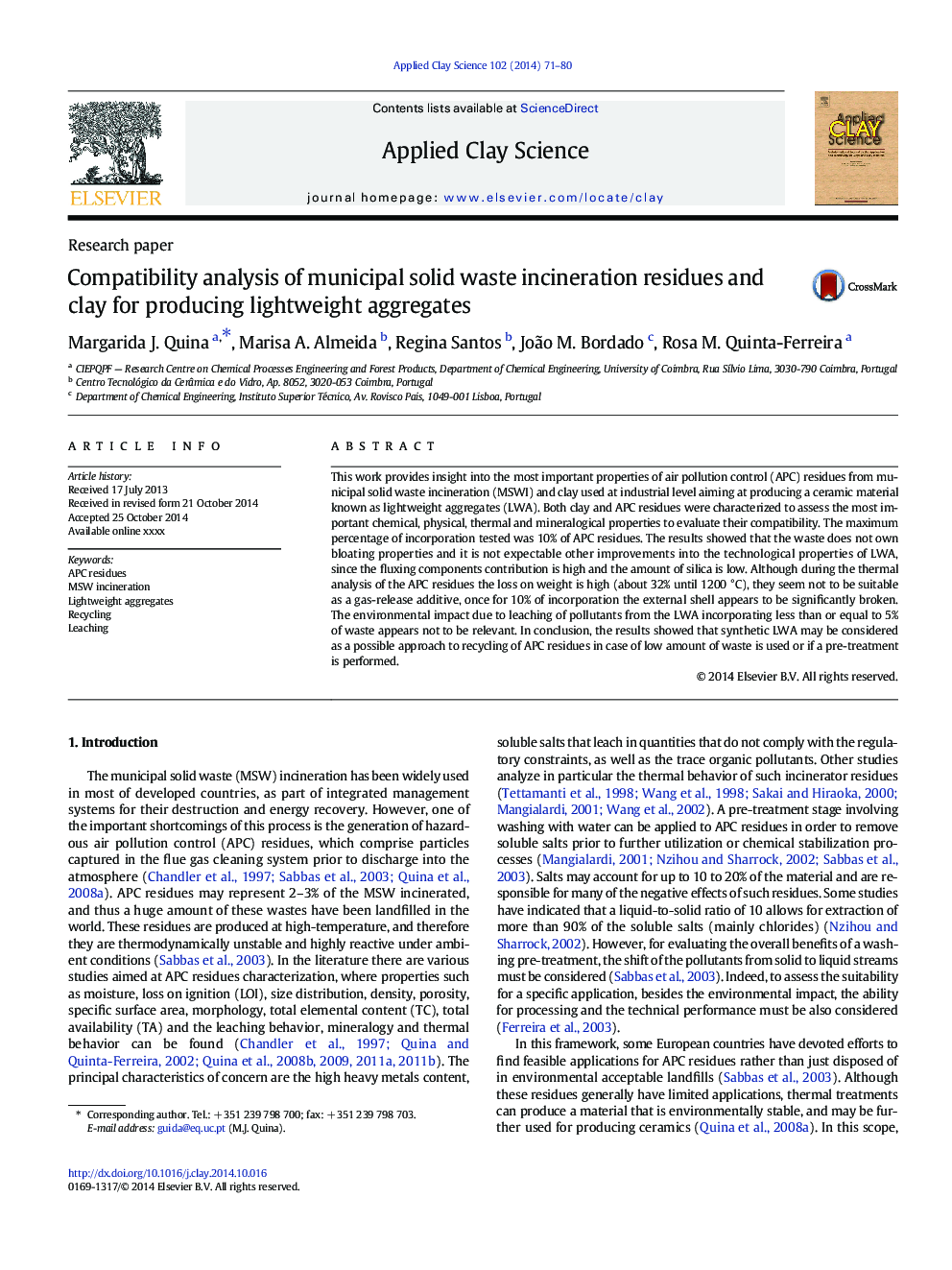| Article ID | Journal | Published Year | Pages | File Type |
|---|---|---|---|---|
| 8046606 | Applied Clay Science | 2014 | 10 Pages |
Abstract
This work provides insight into the most important properties of air pollution control (APC) residues from municipal solid waste incineration (MSWI) and clay used at industrial level aiming at producing a ceramic material known as lightweight aggregates (LWA). Both clay and APC residues were characterized to assess the most important chemical, physical, thermal and mineralogical properties to evaluate their compatibility. The maximum percentage of incorporation tested was 10% of APC residues. The results showed that the waste does not own bloating properties and it is not expectable other improvements into the technological properties of LWA, since the fluxing components contribution is high and the amount of silica is low. Although during the thermal analysis of the APC residues the loss on weight is high (about 32% until 1200 °C), they seem not to be suitable as a gas-release additive, once for 10% of incorporation the external shell appears to be significantly broken. The environmental impact due to leaching of pollutants from the LWA incorporating less than or equal to 5% of waste appears not to be relevant. In conclusion, the results showed that synthetic LWA may be considered as a possible approach to recycling of APC residues in case of low amount of waste is used or if a pre-treatment is performed.
Related Topics
Physical Sciences and Engineering
Earth and Planetary Sciences
Geochemistry and Petrology
Authors
Margarida J. Quina, Marisa A. Almeida, Regina Santos, João M. Bordado, Rosa M. Quinta-Ferreira,
